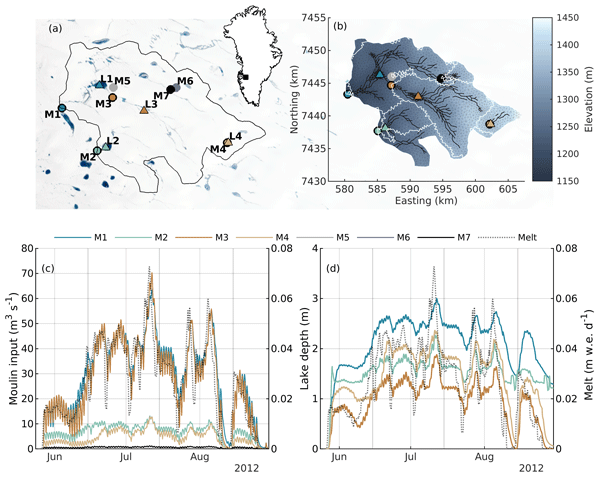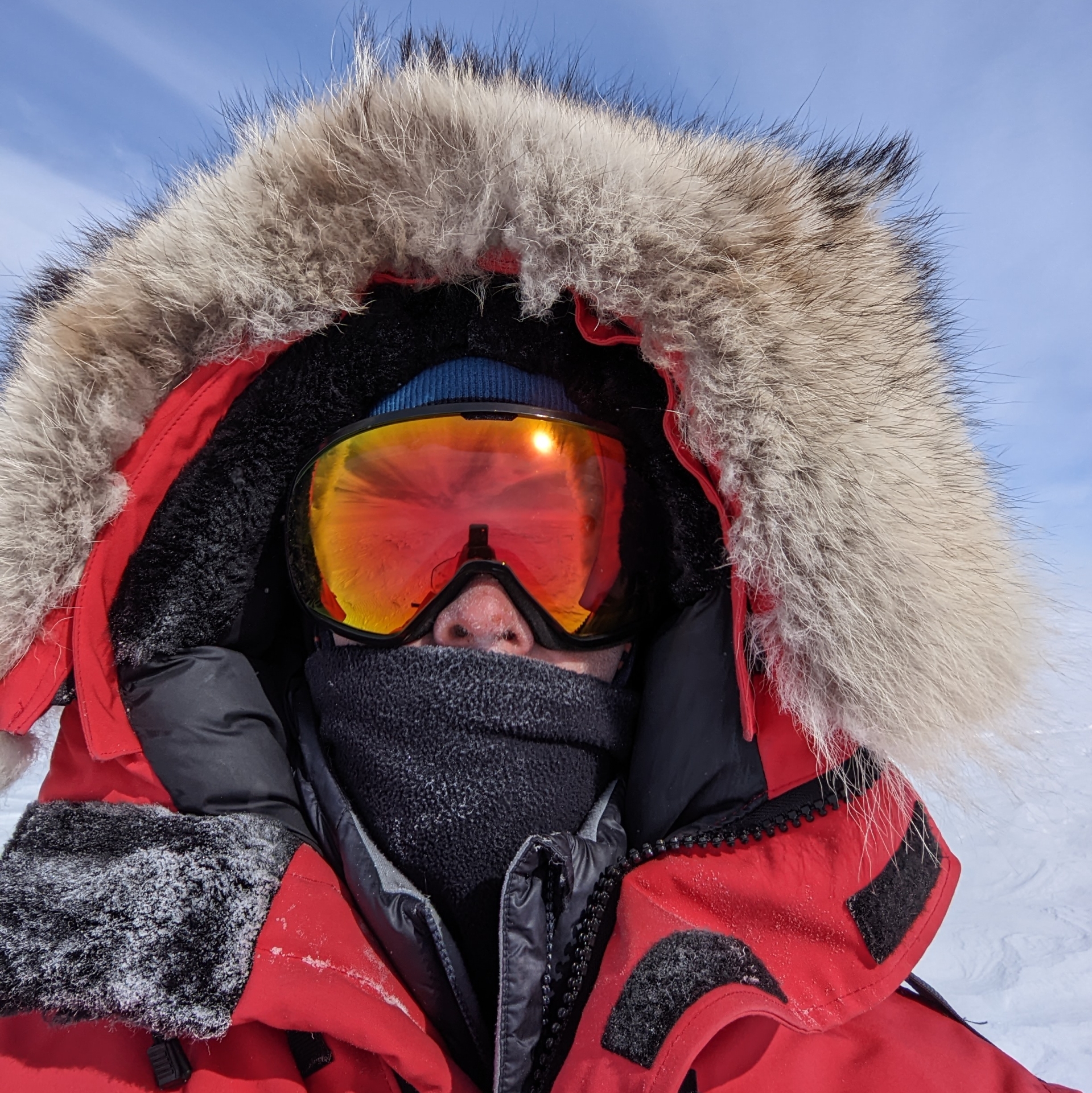Interannual variability in Greenland supraglacial hydrology
Meltwater generated at the Greenland Ice Sheet surface is a key driver of ice sheet velocity through its impact on subglacial hydrology. Somewhat counterintuitively, increasing melt rates in a warming climate have sometimes been linked to reduced ice velocities, suggesting a stabilizing feedback between melt rates and Greenland’s ice-flow sea level rise contribution. At the same time, variability in the rate of meltwater supplied to the subglacial system increases basal water pressure and ice velocities. This hypothesis, however, neglects the action of supraglacial water flow, which critically modulates the volume and timing of meltwater supplied to the subglacial drainage system.
To investigate this key link, I applied the SaDS model to a section of the Greenland Ice Sheet for the years 2011, 2012, 2015, and 2016. Moulin input patterns vary substantially between low and high melt years, however short-term (weekly or shorter) variability in surface melt rate masks some of the interannual variaibility in moulin inputs. This work is published in The Cryosphere: https://doi.org/10.5194/tc-17-2607-2023.

Citation
Hill, T. and Dow, C. F. (2023). The impact of surface melt rate and catchment characteristics on Greenland Ice Sheet moulin inputs. The Cryosphere https://doi.org/10.5194/tc-17-2607-2023
